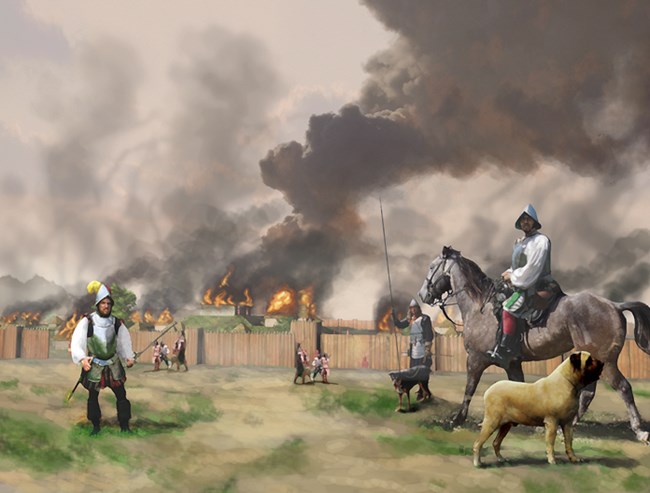
Library of Congress While gold certainly could be found in what is today Georgia and North Carolina, it was not found in quantities anywhere close to that of South America. Believing the indiginous peoples to be hiding their wealth, the conquistadors used a variety of tactics to discover the source of the yellow metal they so eagerly sought. Trade items, such as glass beads, trinkets, and metal tools, were rewards for tribes willing to cooperate. Tribes not willing to cooperate were often faced with threats and acts of violence, important tribal members being held hostage, and outright slaughter were the outcome. The route de Soto's expedition took through Alabama is still a matter of dispute, with some scholars believing the conquistadors followed the Coosa River down past the Canyon Mouth Park area of Little River Canyon National Preserve, and others believing they passed north of Lookout Mountain along the Tennessee River and into Alabama (the current theory most accepted by archaeologists and historians). Nearby De Soto State Park, part of the Alabama State Park system, in named from a disputed legend that members of the de Soto expedition passed through the area. 
Creative Commons Of the 700 participants of the expedition, roughly 311 survived. This period of the American national story is preserved at De Soto National Memorial in Florida, where Hernando de Soto and his conquistadors first set foot on North American soil |
Last updated: May 18, 2021
